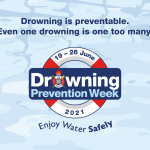Drowning Prevention Information
Table of Contents
Drowning is the third leading cause of unintentional death worldwide. Informational blogs on topics like Dry Drowning and Keeping Your Kids Safe At Home are excellent resources providing guidance and potentially life saving information.
With the knowledge that a child can drown in as little as one inch of water, it is important that parents recognize the risks their children face both at the pool and around the home. Bathtubs, toilets, sinks, buckets, inflatable pools and backyard swimming pools all present risks to your children, resulting in nearly 1,000 deaths per year due to accidental drowning. All it takes is moments for a child to drown, so even a very minor lapse in judgement can be catastrophic. This is why prevention is the best tool for addressing this issue.” – Jonathan Rosenfeld
When talking about drowning, many people think of swimming pools and open water; but there are other dangers that could cause accidental drownings, such as:
-
Bathtubs— A bath, even shallow can be a drowning risk. Water inhalation can happen very quickly, even in shallow bodies of water.
-
Toilets— curious toddlers may find themselves wandering into a bathroom and climbing on the toilet bowl. If they fall in headfirst and get stuck, they can drown in the toilet water.
-
Buckets— we rarely see a bucket used to mop the floors as a drowning hazard, but for a young child, it is accessible and filled with enough liquid to cause drowning if the child falls into the bucket by accident. If you are using a bucket, make sure it is out of your child’s reach and that you store the empty bucket somewhere your child cannot access.
-
Inflatable pools— Inflatable pools are a great way of cooling off on a hot day, but they can still be a dry drowning risk. Knowing the signs of dry drowning is one of the best preventative measures you can make.
-
Pools and lakes— while pools and swimmable lakes provide recreation and exercise, it is important that you always supervise your children and teach them safe practices. You can begin with swimming lessons so that they possess the skills needed to survive in the water and then instruct them on other precautionary measures such as not running near the pool and only swimming under the supervision of an adult.




